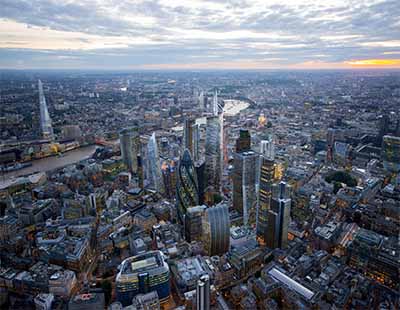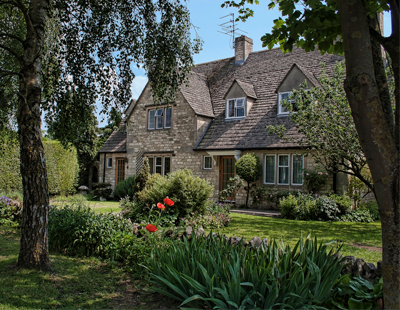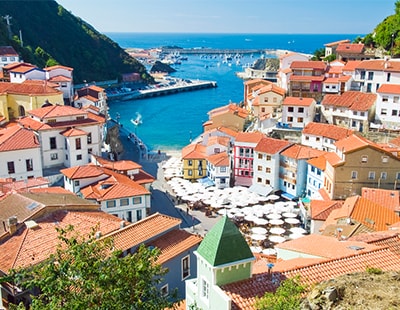Combining this with other examples of investment – including the £1.7 billion being spent on the Asia Business Park and the new developments being delivered – you start to get a picture of Newham’s growth. In line with this, a range of people are looking to move to the area.
Credit card reporting company Experion says 23% of those moving to new build properties in East London are ambitious graduates desiring high-end rental properties (the largest group), while 20% are short-term renters who want a place to live for between one and three years (the second biggest). Attracted to premium new-build homes are young, highly successful city workers – a group named ‘penthouse chic’ who have high salaries and want to live on their own. They comprise 10% of all those looking, according to Experion.
House prices have already risen by 90% over the past decade according to Savills, and Knight Frank predicts that they are to increase by 16.98% by 2024. But, more so than these statistics, I encourage you to visit Newham so you can fully experience the area’s modernisation and vibrancy, from the Queen Elizabeth Olympic Park to the River Lea. Personally, I see it every time I walk through the borough.
Why, post-pandemic, will cities still be attractive places to live? Surely people will continue to desire green space in the countryside?
The future of cities has been much talked about as we head towards the end of the pandemic, but I have no doubt they will continue to thrive – as the last few months have shown. The population has been starved of social contact for so long and I think people are desperate for some excitement. Our experience is that buyers are keen to ensure their homes have access to leisure and cultural facilities, with spaces for socialising and meeting others as well, which is much easier to do in cities.
Ultimately, it’s all about balance. Without question we’ve seen a greater emphasis on easy access to green space over the past eighteen months, but, in my experience, this has always been an important factor for homebuyers and it’s certainly achievable in a city location. More than ever, developers working in urban areas are putting access to green space at the heart of designs. For example, our TwelveTrees Park regeneration project offers a 4.5-acre WiFi-enabled park – just a part of the 12 acres of green space we are creating – that runs the length of the development and is available for both residents and the wider community to use and enjoy. This, combined with excellent transport connections into London and out to the countryside, provides the balance that buyers are seeking.
Let’s also not forget that cities remain important epicentres for business, and we are already seeing many people returning to the office. In fact, the tube network had its busiest rush hour in 18 months a few months ago on Monday 6 September. According to Transport for London (TfL), between 8 am and 9 am “taps” on the tube increased by 22 per cent compared to the previous week and 71 per cent on buses – and I’m confident that this will continue to rise. Working from home has its benefits and I’m sure there will be some balance in where we work, but for businesses to thrive they really need colleagues to be together. Recently the BBC reported that the top 50 UK employers are all looking to retain their office space, which reflects their employees’ preferences.
Younger people especially benefit from being around older colleagues, learning the skills that will help them to progress in years to come. Starting a career is difficult enough – however working from home makes it so much harder to get a feel for the company’s culture and learn the processes, as well as build relationships with fellow employees.
How important are wellbeing and sustainability when it comes to new developments?
They’ve always been important, but recently they’ve become essential. New developments represent a clean slate and so they should reflect modern living, encouraging people to be healthy and sustainable. Fostering well-being in designs is in a developer’s best interests as it makes new places more appealing to potential buyers. This can be achieved in a number of ways but certainly, the link between time in nature and positive mental health is well established, and interestingly post-lockdown research from Savills shows that 62% of home buyers think having outdoor areas is more important since the pandemic began.
Creating homes that are sustainable is also key. We all want to feel pride in the place we live, and people are increasingly taking a property’s environmental credentials into account, especially younger buyers. While new homes are almost always more sustainable than older buildings – because of better-insulated walls and tighter fittings – going above and beyond can make residents really value their property. This can be anything from installing garden roofs to clever interior designs that encourage green habits, such as integrated recycling bins.
What is post-pandemic living likely to look like? And how can developers cater to this?
One of the few positives to come out of the past year is the increased value now placed on community. Almost half of the respondents to a survey from The National Lottery Community Fund said that neighbourly spirit will be better in the future. Housebuilders can cater to this by designing in amenities where people can meet and eat, exercise and have fun – places for incidental interaction as well as planned meet ups, for community life to thrive. Through the inclusion of parks, cafés, restaurants and shops in designs, developers are creating hubs for local people as well as residents, making the on-site properties more valuable at the same time.
The other significant change will be the increased numbers of people working flexibly, with days spent in the office and also at home. A recent study from JLL found that most people would like to work remotely two days a week post the pandemic and it’s really important that new places make flexible working life as easy as possible. This includes providing excellent network connections, as well as spaces to work outside the home – it also means ensuring that local transport connections allow for efficient commutes.
How important are regeneration projects in the recovery of local economies and the national outlook too?
Because the land is being so radically transformed, regeneration projects represent great opportunities for investors, especially when the development is just starting out. TwelveTrees Park was a 26-acre disused brownfield site, home to the former Imperial Works soap factory many years ago. It was a space without a purpose in an area that was growing quickly and needed infrastructure. But now the land is being transformed into a dynamic new neighbourhood providing thousands of new homes, work space, a new park and a state-of-the-art home for the East London Science School.
Housing delivered by regeneration projects supports local businesses by providing places for their employees to live and by creating new communities to shop and buy in their neighbourhood. New jobs are made through commercial facilities, and, from a national point of view, these schemes provide much-needed housing and amenities such as green space. They allow for a more sustainable way of living, helping with the climate crisis as well.
What can be done to ensure people aren't pushed out of areas when regeneration projects happen and prices go up?
Regeneration projects can provide great opportunities for everyone. They bring new jobs as well as spaces for everyone to meet, exercise and relax, including bars, gyms and parks. Most are also mixed tenure offering a range of options for those looking to rent or buy in their area at different levels of affordability.
As such, the best developments will not only provide modern and sustainable homes for communities, but enhance the place as well, bringing with them considerable economic and lifestyle benefits. The potential increase in property prices can also be considered a positive for existing homeowners, who will see the value of their houses go up, in some cases considerably.
Can you tell us more about Berkeley South East London's upcoming plans and projects?
Given the scale and ambition of TwelveTrees Park, delivering the development is our main priority at the moment. We want to make the Newham regeneration project as positive for its residents, the local community and the national outlook as possible. It is a flagship scheme for Berkeley and, when complete, will feature over 3,800 homes alongside numerous modern amenities.









.png)

.jpg)








Join the conversation
Be the first to comment (please use the comment box below)
Please login to comment